- Home
- Quizzes
- My Quiz Activity
- Newsletters
- Sports Betting
- MY FAVORITES
- Add Sports/Teams
- SPORTS
-
NFL
- NFL Home
- Arizona Cardinals
- Atlanta Falcons
- Baltimore Ravens
- Buffalo Bills
- Carolina Panthers
- Chicago Bears
- Cincinnati Bengals
- Cleveland Browns
- Dallas Cowboys
- Denver Broncos
- Detroit Lions
- Green Bay Packers
- Houston Texans
- Indianapolis Colts
- Jacksonville Jaguars
- Kansas City Chiefs
- Las Vegas Raiders
- Los Angeles Chargers
- Los Angeles Rams
- Miami Dolphins
- Minnesota Vikings
- New England Patriots
- New Orleans Saints
- New York Jets
- New York Giants
- Philadelphia Eagles
- Pittsburgh Steelers
- San Francisco 49ers
- Seattle Seahawks
- Tampa Bay Buccaneers
- Tennessee Titans
- Washington Commanders
-
MLB
- MLB Home
- Arizona Diamondbacks
- Atlanta Braves
- Baltimore Orioles
- Boston Red Sox
- Chicago White Sox
- Chicago Cubs
- Cincinnati Reds
- Cleveland Guardians
- Colorado Rockies
- Detroit Tigers
- Houston Astros
- Kansas City Royals
- Los Angeles Angels
- Los Angeles Dodgers
- Miami Marlins
- Milwaukee Brewers
- Minnesota Twins
- New York Yankees
- New York Mets
- Oakland Athletics
- Philadelphia Phillies
- Pittsburgh Pirates
- San Diego Padres
- San Francisco Giants
- Seattle Mariners
- St. Louis Cardinals
- Tampa Bay Rays
- Texas Rangers
- Toronto Blue Jays
- Washington Nationals
-
NBA
- NBA Home
- Atlanta Hawks
- Boston Celtics
- Brooklyn Nets
- Charlotte Hornets
- Chicago Bulls
- Cleveland Cavaliers
- Dallas Mavericks
- Denver Nuggets
- Detroit Pistons
- Golden State Warriors
- Houston Rockets
- Indiana Pacers
- Los Angeles Clippers
- Los Angeles Lakers
- Memphis Grizzlies
- Miami Heat
- Milwaukee Bucks
- Minnesota Timberwolves
- New Orleans Pelicans
- New York Knicks
- Oklahoma City Thunder
- Orlando Magic
- Philadelphia 76ers
- Phoenix Suns
- Portland Trail Blazers
- Sacramento Kings
- San Antonio Spurs
- Toronto Raptors
- Utah Jazz
- Washington Wizards
-
NHL
- NHL Home
- Anaheim Ducks
- Boston Bruins
- Buffalo Sabres
- Calgary Flames
- Carolina Hurricanes
- Chicago Blackhawks
- Colorado Avalanche
- Columbus Blue Jackets
- Dallas Stars
- Detroit Red Wings
- Edmonton Oilers
- Florida Panthers
- Los Angeles Kings
- Minnesota Wild
- Montreal Canadiens
- Nashville Predators
- New Jersey Devils
- New York Islanders
- New York Rangers
- Ottawa Senators
- Philadelphia Flyers
- Pittsburgh Penguins
- San Jose Sharks
- Seattle Kraken
- St. Louis Blues
- Tampa Bay Lightning
- Toronto Maple Leafs
- Utah Hockey Club
- Vancouver Canucks
- Vegas Golden Knights
- Washington Capitals
- Winnipeg Jets
- NCAAF
- NCAAM
- Olympics
- Boxing
- Entertainment
- Lifestyle
- Golf
- MMA
- Soccer
- Tennis
- Wrestling
- More Sports
- RESOURCES
- My Account
- YB on Facebook
- YB on Twitter
- YB on Flipboard
- Contact Us
- Privacy Policy
- Terms of Service

20 classic films that deserve a new theater release
By this point, it’s no secret that movie theaters are in a bit of trouble, with the summer 2024 box office proving sluggish. However, there’s always reason to hope, and Hollywood has repeatedly shown that it’s quite willing and able to use its classic films to draw people back into the theater. Indeed, many films from previous periods of history make for an exciting experience when seen on the big screen. The combination of the communal viewing encounter and the immersive experience of theatrical projection makes for an experience that can never be fully replicated at home.
'Saving Private Ryan'
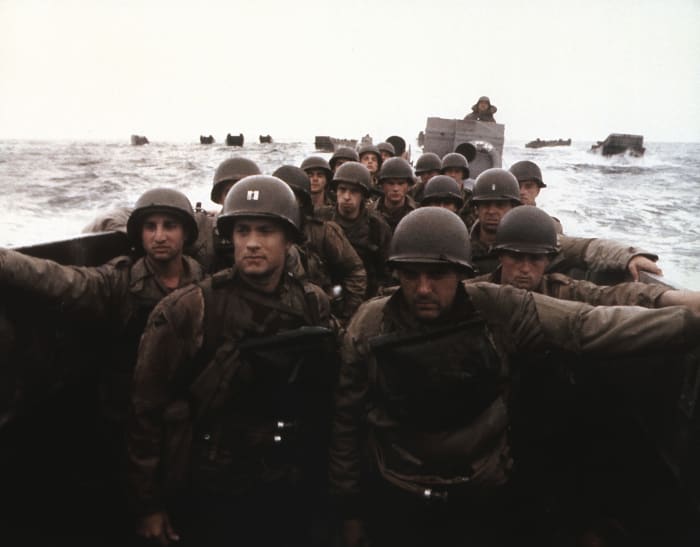
The 1990s proved to be a particularly fertile decade for Steven Spielberg, who directed some of his most beloved and critically lauded works during the decade. Saving Private Ryan stands the test of time, particularly since it featured powerful performances from the likes of Tom Hanks and Matt Damon. The film was particularly well-known (and praised) for its remarkable recreation of the events of D-Day and must be seen on the big screen to grasp how powerful it is as a piece of filmmaking. Just as importantly, a theatrical re-release of this particular film would be a timely reminder of the sacrifices that the Greatest Generation made to free the world from evil.
'Sleeping Beauty'

There’s no question that Disney remains one of the most powerful studios in the world, and even though they own many properties, their animated features occupy pride of place in studio history. Sleeping Beauty remains one of Disney’s most ambitious productions, and though it proved to be a costly misfire at the time, it has since come to be seen as one of their best. Everything about it merits a theatrical release, from its gorgeously stylized animation reminiscent of Renaissance paintings to the voice performances, particularly from Eleanor Audley, who gave the world the inimitable villain that is Maleficent.
'Jaws'

If there’s one film from the 1970s that helped to change the course of Hollywood, it would have to be Steven Spielberg’s Jaws, which became a true blockbuster. Watching it in a theater gives one a sense of what it must have been like to see it at the time, with all the terror and excitement of seeing a shark stalk a seaside town. Aside from the visual feast inherent in the big-screen experience, there is also the film’s immediately recognizable sound design, and experiencing it in a theater is enough to make one almost feel as if they are at the whim of the shark and the power of nature it represents.
'Alien'

Ridley Scott’s Alien remains a hallmark of horror and sci-fi cinema, and no one who has seen the film could ever forget the visceral terror of a chestburster erupting out of a person’s stomach. Seeing in the darkened atmosphere of a theater, with the monsters blown up to even greater proportions on the screen, makes for a unique horror experience. There’s no doubt that Scott has a keen sense of cinematic space, and the expanded dimensions of the film screen help one to appreciate just why it is that this particular film has become so beloved and why it managed to give birth to a franchise that still endures.
'Snow White and the Seven Dwarfs'
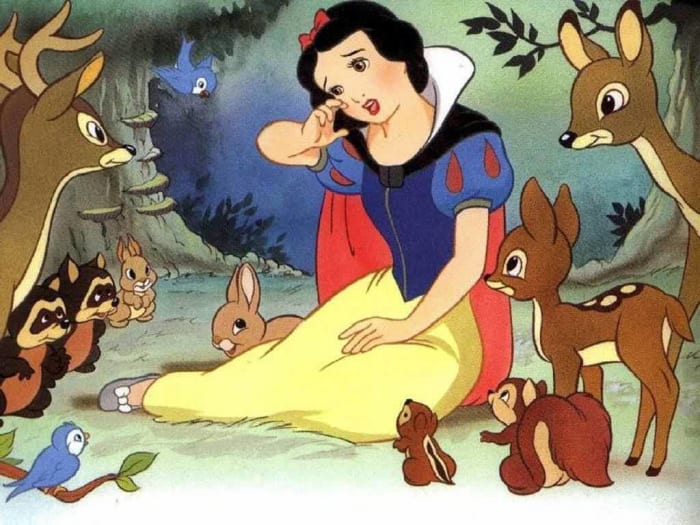
If one classic Disney film must be seen on a big screen, it must be Snow White, the major feature that started it all. Without Snow White, it’s doubtful that either Disney or animation in general would have become the cultural force that it remains. Watching it in a theater can give the viewer the sense that they are once again sitting at the beginning of a new era of filmmaking. And, when it comes right down to it, there is something enduringly magical about this traditional fairy tale story rendered in the beautiful and meticulously rendered animation for which Walt Disney and the studio he founded would become justly famous and respected.
'Sunset Boulevard'

Billy Wilder was one of the most versatile directors in classical Hollywood, capable of producing anything from whip-smart comedies to dark and brooding noirs. One of the best examples of the latter is Sunset Boulevard, which stars Gloria Swanson and William Holden as faded movie star Norma Desmond and Joe Gillis, the struggling screenwriter who falls under her sway. It’s a remarkable film because it offers a scathing look at how Hollywood uses up its stars and discards them. Watching it in a theater gives a modern audience the chance to appreciate the extent to which Wilder was a master writer and director, capable of crafting compelling dialogue and a remarkable visual design in all of his films.
'Gladiator'

Throughout his lengthy career, Ridley Scott has shown remarkable versatility, and with Gladiator , he breathed some fresh life into the big-screen ancient world spectacular. Russell Crowe delivered one of his most memorable and indelible performances as Maximus, the general who is betrayed and becomes a gladiator before bringing down the corrupt Emperor Commodus. The film has all of the stirring action and emotional depth one would expect from the genre, and seeing it in a theater gives one a new appreciation for Scott’s mastery as a director, showing him to be someone who could capture both deep human emotion and action with equal aplomb.
'How to Marry a Millionaire'

By now, audiences have become so used to big screens at the cinema that it’s hard to imagine a period when this wasn’t the default. However, widescreen was only sporadically used in Hollywood until the 1950s, when the studios began to use it to combat the appeal of television. How to Marry a Millionaire was one of the very first films released in the new process known as CinemaScope, and it’s one of those films that makes maximum use of the new space allowed by the wider screen. Watching it in a cinema gives one a keener understanding of Hollywood history, and when it comes down to it, who wouldn’t want to see the likes of Marilyn Monroe, Lauren Bacall, and Betty Grable in all of their Technicolor glory?
'How the West Was Won'
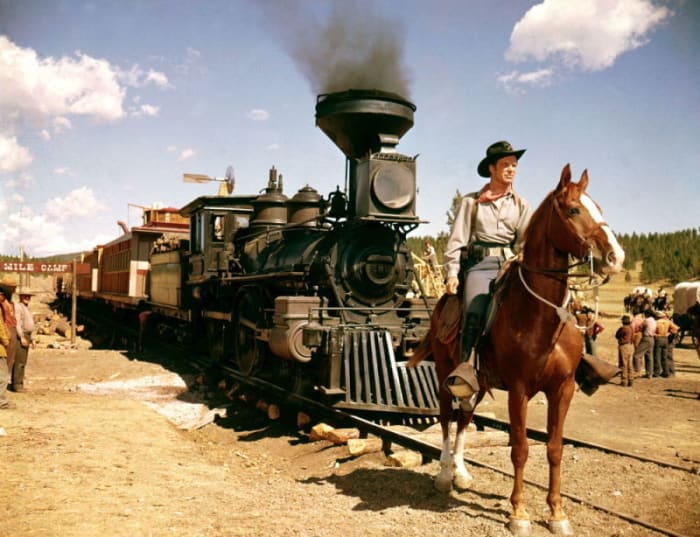
The sprawling epic western How the West Was Won was originally shown in Cinerama, the incredibly immersive widescreen process that was designed to erase the feeling of separation between viewer and audience, to allow the latter to feel as if they were part of the cinematic image. As its title suggests, the film purports to be the story of the settlement of the American West as seen through a single family. Even though modern screens can’t fully capture the full effect of something like Cinerama, it is nevertheless truly exhilarating to see it in a theatrical setting, which captures at least a bit of what it must have been like to see this when it was first released.
'Pillow Talk'
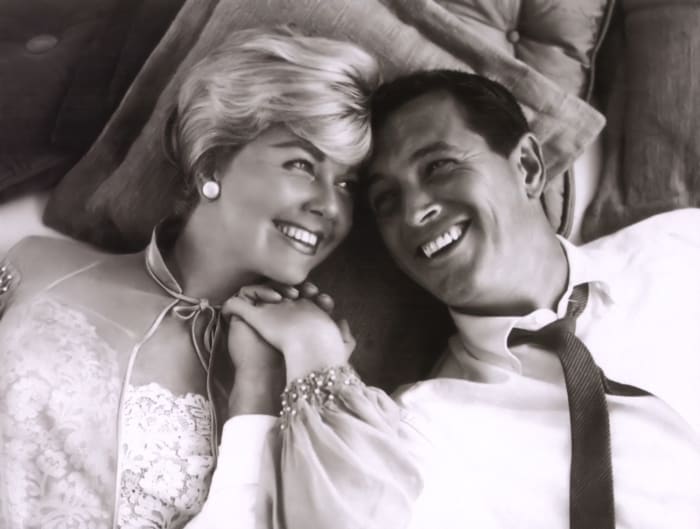
In the 1950s, there were few pairings as successful as that of Doris Day and Rock Hudson, who appeared in several sex comedies together. Their energies were so perfectly complementary that it’s easy to see why they became so popular, and Pillow Talk remains one of their most beloved collaborations. Day is perfect as interior decorator Jan Morrow, and Hudson is perfect as playboy Brad Allen. It’s a movie that is best experienced with a group, and seeing it theatrically is the best way to understand why Hudson and Day were two of the biggest movie stars of their generation.
'Ben-Hur'
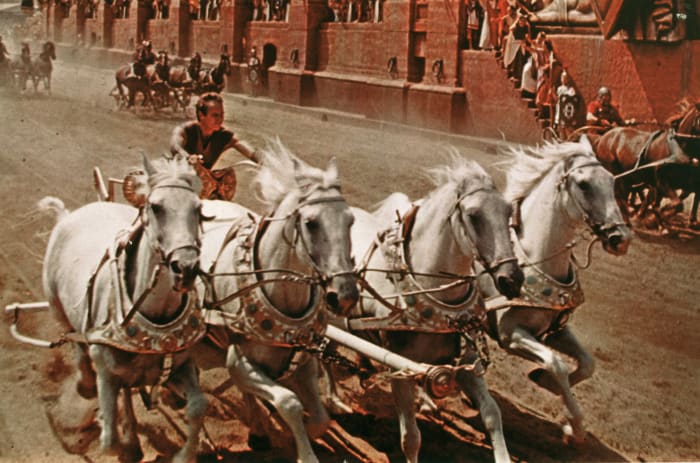
Ben-Hur, in some ways, marked the apogee of the biblical epic since it was the top box office draw of 1959 and earned more Academy Awards than any film up to that time. Its story is familiar — Charlton Heston’s Judah Ben-Hur begins as a Jewish prince before being betrayed by his former best friend and becoming a galley slave and a chariot racer before ultimately bearing witness to the Crucifixion. However, beneath the pomp and circumstance of the epic, there is a truly emotional story, and the film’s ability to balance its emotional intimacy with the trappings of epic cinema makes it such a stupendous experience to see in a theater.
'Lawrence of Arabia'
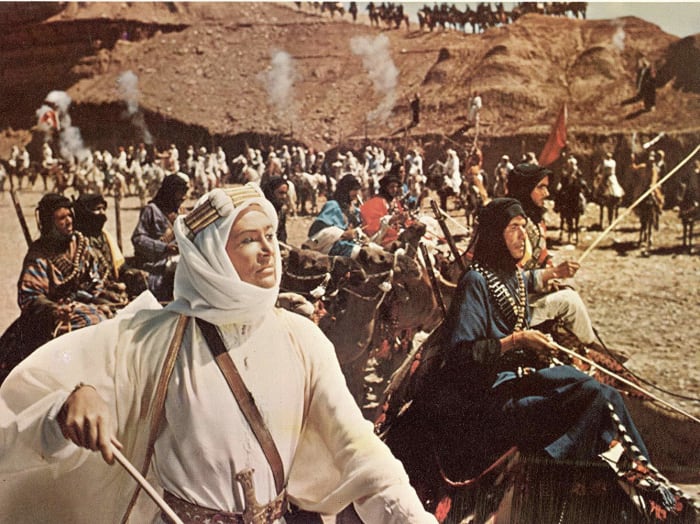
Lawrence of Arabia is rightly and wisely seen as one of the best films ever made, and it was certainly a triumph for director David Lean and star Peter O’Toole, the latter of whom played the title character. It simply sweeps the viewer up in the splendor, power, and majesty of the past as Toole’s Lawrence does his part to foment revolt against the Ottoman Empire. It’s the kind of film that simply demands to be seen in a theater if it's at all possible, precisely because Lean is so meticulous and deliberate about how he uses the widescreen frame. Moreover, only seeing it on a big screen really gives the viewer the experience of history unfolding, a phenomenon at which the epic film genre excels.
'Jurassic Park'
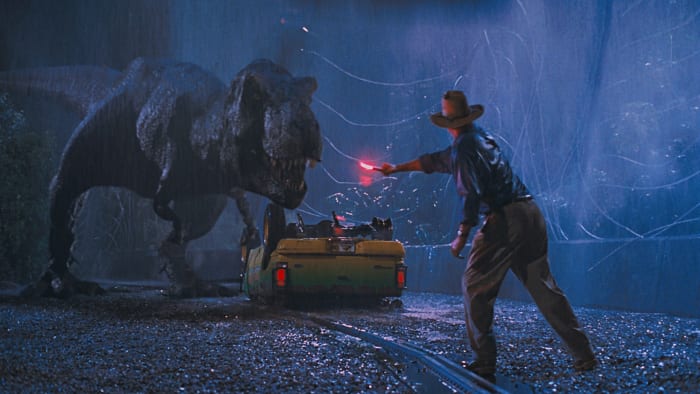
Even now, thirty years after its initial release, Jurassic Park has the power to inspire awe and wonder in an audience, thanks to Steven Spielberg’s blockbuster direction, a very smart screenplay (co-written by Michael Crichton, who also wrote the original novel), and performances from heavy hitters such as Sam Neill, Laura Dern, and Jeff Goldblum. It’s really the dinosaurs who steal the show, however, and even though CGI has come a long way since then, there’s still no beating the moment when they first grace the screen. Seeing it in the theater is a bit like taking a step back in time, allowing for an encounter with the seemingly unstoppable optimism of 1990s Hollywood.
'Dances with Wolves'

Throughout his career, Kevin Costner has repeatedly shown a familiarity with and love of the western, and perhaps no film of his better illustrates this than Dances with Wolves. Like many epics, it’s a film about the ending of one world and the beginning of another, as the American frontier is slowly encroached upon by white settlers, who push Indigenous people ever further off their lands. Costner is at his scenery-chewing best as Lt. John J. Dunbar, a role that would characterize his career. Given that Costner is set to appear in (and direct) another big-budget western epic, watching this in a theater would be the perfect preparation.
'Vertigo'

If there were one director in classic Hollywood who could lay claim to being the true master of suspense, it would have to be Alfred Hitchcock, and perhaps no film of his better illustrates his skill than Vertigo, which pulses with the desires of its main character, James Stewart’s Scotty, who develops an obsession with Kim Hunter’s. Judy Barton / Madeleine Elster. Watching it in the theater allows for a richer appreciation of the aesthetics of Technicolor, which Hitchcock uses to maximum effect. It’s one of those kinds of films that shows just how much Hollywood has changed, and seeing it in a theatrical setting is a nice way to indulge in a bit of classic Hollywood nostalgia.
'2001: A Space Odyssey'

Stanley Kubrick’s 2001: A Space Odyssey is one of those films that combines a remarkable visuality with heady philosophy, showcasing the director’s tremendous talents. Based on the short story “The Sentinel” by Arthur C. Clarke, it’s a thoughtful reflection on the nature of reality and human consciousness. It also benefits from the enormous scale offered by the theatrical experience. Seeing it on the big screen allows the viewer to really feel how immersive and awe-inspiring the film was intended to be, and it’s high time that it was brought back for a theatrical release in order to give contemporary audiences insight into how it would have looked when it first hit theaters in the 1960s.
'All About Eve'

All About Eve is the perfect blend of sharp writing, incisive directing, and stupendous acting. Anyone who has seen the film can’t help but be in awe of the verbal venom on display, particularly from Bette Davis and Anne Baxter, who play fading theater actress Margo Channing and Eve Harrington, the sly young woman who seeks to supplant her. The film has enjoyed quite a life on television since its release in 1950, but there’s still a unique pleasure to seeing it on the big screen. After all, both Davis and Baxter were stars of old Hollywood, and modern audiences would no doubt get a great deal of pleasure out of seeing them as they were meant to be seen.
'Singin’ in the Rain'

Certain genres lend themselves to big-screen exhibition and one of these is the musical. With its bright colors and its spectacle (visual and aural), the musical invites the audience to inhabit a world of utopian delights. Singin’ in the Rain is truly one of the best examples of the genre, and it manages to be infectiously joyful and remarkably sophisticated in examining the history of Hollywood and the advent of sound. Giving it a theatrical re-release would remind today’s audiences of just how much fun classic Hollywood films can be, and, at the end of the day, there are few things more enjoyable than seeing Gene Kelly, Donald O’Connor, and Debbie Reynolds sing “Good Morning.”
'Planet of the Apes'
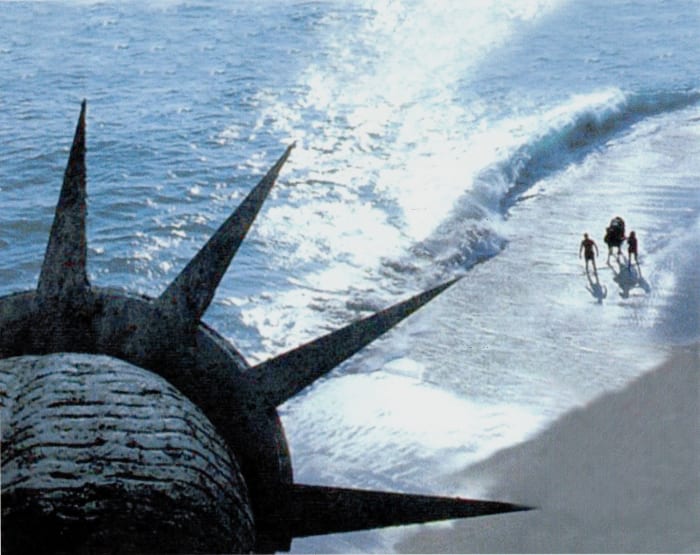
Since its release in 1968, Planet of the Apes has proven to be remarkably enduring, giving birth to a franchise that continues to this day, with 2024’s Kingdom of the Planet of the Apes. The original still packs a punch, thanks to a memorable performance from Charlton Heston, its thought-provoking premise, and, at times, disturbing visuals. Thus, it benefits from being seen on the big screen to more fully recreate the experience of being immersed in Heston’s Taylor’s point of view as he tries to navigate this perilous world that seems to have been turned upside down.
'The Ten Commandments'

The 1950s was undoubtedly a golden age for the biblical epic, and they don’t come much more epic than Cecil B. DeMille’s The Ten Commandments. As one might guess from the title, the film follows the life and career of Moses (played by Charlton Heston), who goes from being reared as an Egyptian prince to being the leader of the Israelites. It might appear silly to modern audiences, but seeing it on the big screen reinforces how spectacular films like this one were in their heyday. Filled with eye-popping Technicolor, thousands of extras, some truly memorable performances, and some remarkable special effects — most notably the parting of the Red Sea — this is the type of movie that should be seen in the theater.
Thomas J. West III earned a PhD in film and screen studies from Syracuse University in 2018. His writing on film and TV has appeared at Screen Rant, Screenology, FanFare, Primetimer, Cinemania, and in a number of scholarly journals and edited collections. He co-hosts the Queens of the B's podcast and writes a regular newsletter, Omnivorous, on Substack. He is also an active member of GALECA, the Society of LGBTQ Entertainment Critics.
More must-reads:
- Do you know all 20 of these 'Fast Times at Ridgemont High' facts?
- Geek squad: 23 beloved pop culture nerds
Trending in Entertainment
Customize Your Newsletter
 +
+
Get the latest news and rumors, customized to your favorite sports and teams. Emailed daily. Always free!
Use of this website (including any and all parts and
components) constitutes your acceptance of these
Terms of Service and Privacy Policy.
This site is for entertainment purposes only.
There is no gambling offered on this site.
Gambling Problem? Call 1-800-Gambler.
